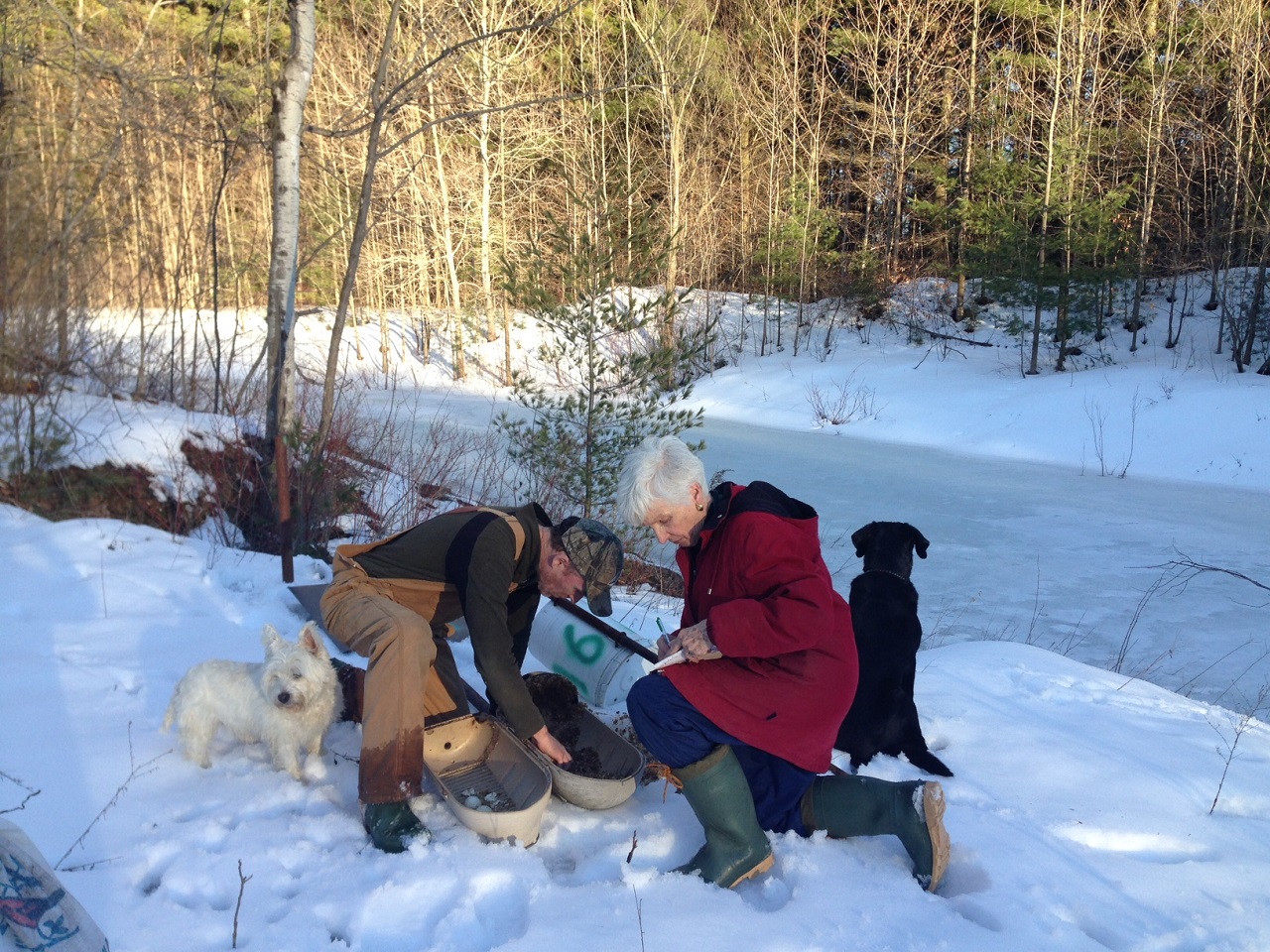Unforgettable ducks
Long-time nest box stewards relive memories thanks to impressive collection of data

Scribbled lists. Appointment calendars. Post-it Notes. String tied around our fingers. We all find ways to keep track of names, events and appointments that are part of our busy lives. Otherwise, we’re bound to forget them.
Still, like most of us, Bill and Patricia Steele know what it’s like to occasionally forget something. Bill jokingly refers to it as, “having a senior’s moment”. Yet, this couple can tell you exactly how many ducklings (622) hatched in nest boxes on their property each year since 1994.
Because when it comes to their conservation efforts, Bill and Patricia don’t rely on memory alone. Instead, they put their trust in data they’ve been collecting for the past 22 years.
But in the 1970s, the importance of record-keeping was the last thing on their minds.
Back then, the Steeles were raising their young family in London, Ont. A couple that enjoys the outdoors, they decided to buy a farm located a short distance from Lucknow, in Bruce County. “We fell in love with the landscape,” says Patricia.
Each weekend, the pair would pack up their kids and the family’s Labrador retriever, then drive about an hour and a half northwest to their country property. There, they’d work on renovating the century-old house that came with the farm. “It was a lot of work, but we had a lot of help doing it,” says Patricia.
Their home wasn’t the only thing in need of attention. Bill and Patricia saw an opportunity to improve the land, as well.
In 1975, the couple teamed up with DUC to restore a wetland on their property. In 1994, they began placing nest boxes near this same wetland. Bill, an avid wildfowler, saw this as a chance to “give back” to nature.
Now both retired, the Steeles live on the farm full time, where they enjoy their renovated home and landscape. Over the years, they’ve replaced old nest boxes and built new satellite ponds (to provide more waterfowl habitat). And the pool of volunteers the couple call on to help maintain their nest boxes has grown. “Our kids and our grandchildren love to help us. We let them know when we’re going to do it, and they come out,” says Patricia. “It’s a lot of fun.”
While there’s been many changes over the years, one thing has remained constant.
“We’ve kept a record since Day One,” says Patricia. “It’s no good doing this, if you don’t know what’s happened and what might happen,” adds Bill.

©DUC
Each winter, the Steele’s inspect their nest boxes. Patricia records her observations onto scraps of paper, then transcribes her notes into a journal the family’s kept for more than 20 years. This book includes rows of information about nest successes, failures and surprising discoveries. Like the time a family of young screech owls flew out while Bill and Patricia were cleaning one nest box with their grandkids. “They thought that was pretty cool,” says Patricia, laughing at the memory.
The journal has become a family keepsake that Bill and Patricia hope to pass on to the next generation. “There’s a lot of pages, and we’ll never fill them in our lifetime,” says Patricia.
DUC conservation specialist Jeff Krete encourages all landowners with nest boxes to maintain records, like the Steele family. “This data is important to reflect on so you can understand what’s happening in your nest boxes,” he says. Having this site specific knowledge also allows landowners who know their property best to make wise decisions about their nest boxes.
For example, “If you encounter a nest box with 16 or more eggs, and the majority of them haven’t hatched, you can assume there’s a lot of competition for nest sites” says Krete. Wood ducks and hooded mergansers will lay eggs in another hen’s nest. When this happens, many eggs will remain unhatched or the nest may be abandoned entirely.
Keeping data on nest boxes allows landowners to learn when a landscape is under-served and can also help determine the best location to place a nest box. “If year after year, a nest box isn’t being used, perhaps there’s a better place to situate it,” says Krete.
Back in Lucknow, it’s been more than 40 years since Bill and Patricia bought their farmland, and more than 20 since they began to maintain nest boxes there. When asked what year they introduced new nest boxes on their property, Patricia apologizes. She can’t remember.
Without skipping a beat, she adds, “Let me check my records.”



